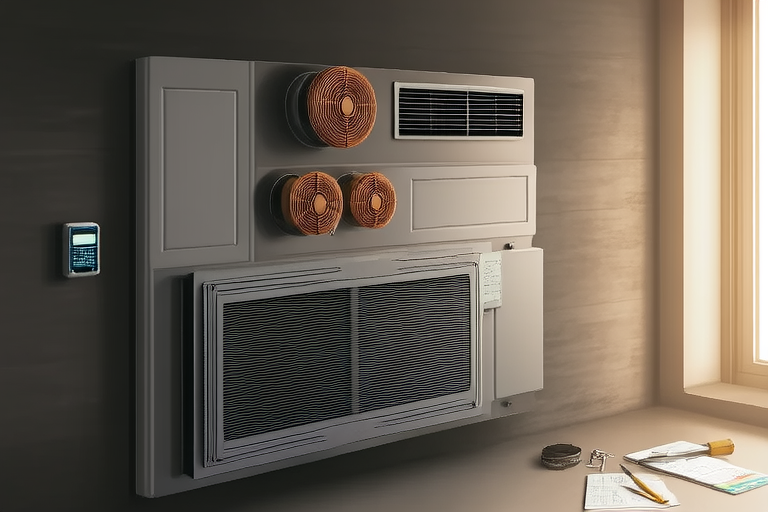Introduction
Your HVAC (Heating, Ventilation, and Air Conditioning) system is the heart of your home’s comfort. It not only ensures that you stay warm in winter and cool in summer but also plays a crucial role in maintaining indoor air quality. Proper maintenance can extend the lifespan of your system, reduce energy bills, and prevent costly repairs. In this guide, we’ll walk you through the essential steps to keep your HVAC system running efficiently, from routine checks to professional servicing.
Understanding the Basics of HVAC Systems
Before diving into maintenance tips, it’s important to understand how your HVAC system works. Most residential systems consist of three main components: the furnace or boiler (for heating), the air conditioner (for cooling), and the ventilation system. These components work together to regulate temperature and circulate air throughout your home.
Key Components of an HVAC System
- Furnace/Boiler: Responsible for heating your home by burning fuel (gas, oil, or electricity).
- Air Conditioner: Cools your home by removing heat and humidity from the air.
- Ventilation System: Ensures proper airflow, which helps distribute conditioned air evenly and removes stale air.
Understanding these components will help you identify potential issues and know when to seek professional assistance.
Routine Maintenance Tasks You Can Do Yourself
Performing regular maintenance tasks can significantly improve the efficiency of your HVAC system and prolong its life. Here are some DIY maintenance tips:
Cleaning or Replacing Filters
One of the simplest and most effective ways to maintain your HVAC system is by cleaning or replacing air filters regularly. Dirty filters can reduce airflow, causing the system to work harder and consume more energy.
- Locate the filter in your HVAC unit. It’s usually found near the return air vent.
- Check the filter for dust and debris. If it looks dirty, replace it with a new one of the same size and type.
- If the filter is reusable, clean it according to the manufacturer’s instructions.
Frequency: Change or clean filters every 1-3 months, depending on usage and environmental conditions.
Inspecting Ductwork
Ducts play a vital role in distributing conditioned air throughout your home. Leaky or poorly insulated ducts can lead to significant energy loss.
- Visually inspect the ducts for any visible damage, such as cracks or gaps.
- Check for insulation around the ducts. If it’s damaged or missing, replace it to prevent heat loss.
- Seal any leaks using duct tape or mastic sealant.
Checking Thermostat Settings
A properly functioning thermostat ensures that your HVAC system operates efficiently. Improper settings can lead to unnecessary energy consumption.
- Ensure your thermostat is set to the correct mode (heat, cool, or auto).
- Adjust the temperature settings to match your comfort level while keeping energy efficiency in mind.
- Consider upgrading to a programmable thermostat to automate temperature adjustments during different times of the day.
Professional Maintenance and Repairs
While DIY maintenance is beneficial, there are certain tasks that require professional expertise. Regular inspections by a qualified technician can catch potential problems before they become major issues.
Annual Professional Inspection
An annual inspection by a HVAC technician is recommended to ensure optimal performance and safety.
Key Areas Checked:
- Refrigerant Levels: Low refrigerant can cause the system to overwork and potentially break down.
- Blower Motor: Ensuring the motor is running smoothly and efficiently.
- Electrical Connections: Checking for loose or faulty connections.
- Safety Controls: Verifying that all safety features are functioning correctly.
Addressing Common Issues
If you notice unusual noises, fluctuating temperatures, or increased energy bills, it may be time to call a professional. Some common issues include:
- Leaking Refrigerant: This can cause the system to freeze up and stop working properly.
- Dirty Condenser Coils: Accumulated dirt can reduce the system’s efficiency.
- Faulty Thermostat: Misreading temperatures can lead to inconsistent heating or cooling.
Maximizing Energy Efficiency
In addition to regular maintenance, there are several strategies you can employ to maximize the energy efficiency of your HVAC system.
Sealing Air Leaks
Sealing gaps and cracks around doors, windows, and other openings can prevent conditioned air from escaping and unconditioned air from entering.
- Use weatherstripping and caulking to seal gaps.
- Install door sweeps to prevent drafts under doors.
- Consider adding window treatments like drapes or blinds to further insulate windows.
Zoning Systems
A zoning system allows you to control the temperature in different areas of your home independently, reducing energy waste.
Benefits:
- Customized Comfort: Heat or cool only the rooms you’re using.
- Energy Savings: Avoid conditioning empty rooms, leading to lower utility bills.
Upgrading to ENERGY STAR Certified Equipment
If your current HVAC system is outdated, consider upgrading to an ENERGY STAR certified model. These systems are designed to be more efficient and environmentally friendly.
Conclusion
Maintaining your HVAC system is key to ensuring its longevity, efficiency, and safety. By following these step-by-step guidelines—ranging from simple DIY tasks to professional inspections—you can enjoy a comfortable home environment year-round. Remember, regular maintenance not only saves money on energy bills but also prevents costly repairs.
Action Steps:
- Schedule an annual professional inspection.
- Clean or replace air filters monthly.
- Seal any air leaks around doors and windows.
- Consider upgrading to a programmable thermostat or a zoning system.
Taking these actions will help you get the most out of your HVAC system and create a healthier, more comfortable living space.
